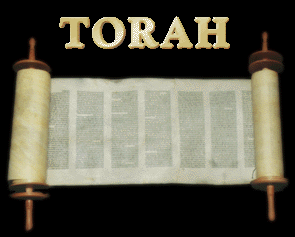





"Sound the Shofar in Zion and sound the alarm in my holy mountain: let all the inhabitants of the Land tremble: for the day of the Lord cometh, it is nigh at hand" (Joel 2:1)



 Join Our Network
Join Our Network



a) Spring Festivals ---> Teach about the first coming of Yeshua
b) Fall Festivals ---> Teach about the second coming of Yeshua
"Lo, I (Jesus/Yeshua) have come, in the volume of the book (Bible) it is written of me"
We know that this verse is speaking about Yeshua because it is quoted in Hebrews 10:4-7.
(Psalm 40:7 = Hebrews 10:7)
The volume (book) of the Bible is written about the Messiah and His role in the redemptive plan of God.
===> Luke 24:44 confirms that the Law (Torah), Prophets (Nevi'im), and the Psalms (Chetuvim) speak about Yeshua further confirming our understanding of Psalm 40:7.
The Jewish people refer to the Old Testament as the TeNaCh.
This is an acronym for the order which the Old Testament is laid out in a Hebrew Bible:
a. Law/Torah - First five books
b. Prophets - Nevi'im (Isaiah, Jeremiah etc.)
c. Writings - Chetuvim (Psalms, Proverbs etc.)
Jesus/Yeshua referred to the Old Testament in this manner (Luke 24:44)
1) Language 2) Culture 3) Customs 4) Idioms
A. The original Biblical language ---> Hebrew
B. The culture is the Hebraic culture of the nation of Israel. The setting of this culture was the Middle East. In order to fully understand the Bible, we must understand the geography and history of the land of Israel and its people.
So, we will be studying the Hebraic heritage which God gave to His people which includes having an understanding of the sabbath, the new moon, and the Biblical Festivals so that we can better understand the first and second comings of Yeshua/Jesus, the Messiah (Col 2:16-17).
C. A custom is associated to the culture. We must understand the customs which God gave to the nation of Israel to fully understand His instruction to us (Romans 9:2-5, I Chronicles 28:11-13)
D. An idiom is a phrase, saying or slang that is understood in the language, culture, and customs of a given group of people at a given period of time
Let's consider an example of how God gave the Hebrew language to communicate His spiritual truths. Refer to your handout and consider the word translated into English as 'generation' as found in Genesis 2:4, 5:1, and Ruth 4:18. This is the Hebrew word "Toldah/Toldot". It is the word (8435) in the Strong's Concordance.
Regarding the words in the Old Testament (TeNaCh), Jesus/Yeshua said in Matthew 5:17-18 that every jot (Yod -- the smallest letter in the Hebrew alphabet) and tittle (Taggim -- the decoration crowns on some Hebrew letters in the Bible) will be fulfilled. Here, Jesus/Yeshua is highlighting the significance of the Hebrew language in communicating the truths in the Bible.
Let's consider an example of an "Idiom" which is 'a phrase, saying, or slang' which needs to be understood in the language, culture, and customs of the people in Biblical times. In order to do this, let's examine what is a "good eye" and an "evil eye" from Matthew 6:22-23.
1. What is a "good eye"? A good eye is someone who is generous (Proverbs 22:9). The word 'bountiful' is the same word translated as 'good' in Genesis 1:4.
2. What is an "evil eye"? An evil eye is someone who is stingy. (Prov 23:6 = Deut 15:9)
===> Because we found the definition of a "good eye" and an "evil eye" in the Bible, we can understand another truth.
-----> The Bible will define itself. We do not need to mix our own interpretation of the Bible.
B. This truth requires us to "study to show thyself approved" (II Tim. 2:15).
C. In comparing spiritual things with spiritual things (scripture with scripture), by the mouth of two or three witnesses is every scripture established (Deut. 19:15, II Cor. 13:1, Matt 18:16, John 8:16-17).
Jesus/Yeshua established that there are three witnesses which testify that He is the Messiah (Luke 24:44). These are: Law/Torah, Prophets (Nevi'im), Psalms (Chetuvim) -- TeNaCh.
D. No scripture is of any private interpretation. (II Peter 1:20-21).
E. This requires us to study the scripture so that we are not in error (Mark 12:24, Acts 17:11, Acts 18:24-28, I Cor 1:18,21-24).
For this Bible study, we will be using a "Gesenius Hebrew Lexicon" for the Old Testament/TeNaCh and the "Thayer's Greek Lexicon" for the New Testament.
2. Every scripture should be established by the mouth of how many witnesses?
3. What method/tool did God choose to communicate His redemptive plan and allow us to understand our personal relationship with Him?
4. What is the meaning of Psalm 40:7?
5. In Luke 24:44, why did Yeshua/Jesus make reference to the Old Testament as 'the law (Torah) of Moses, the Prophets, and the Psalms'?
6. What does the acronym, 'TeNaCh' mean?
7. What are four different areas which make up the laws of communication?
8. What is the only language in the world which is a spiritual language?
9. Why is it important to understand the culture and the customs of the people in the Biblical days?
10. The Hebrew word, 'Toldot' means generation. Why is this word spelled with two 'vavs' in Genesis 2:1 and Ruth 4:18 but is only spelled with one 'vav' in all the scripture passages in between?
11. In Matthew 5:18, what is a 'jot'?
12. In Matthew 5:18, what is a 'tittle'?
13. What is an idiom?
14. In the Bible, what does the idiom, 'good eye' mean?
15. In the Bible, what does the idiom, 'evil eye' mean?
16. From a Hebraic perspective, what is the highest form of worship of God?
17. How do you use a Strong's Concordance?
18. What is the value of the Gesenius Hebrew Lexicon and the Thayer's Greek Lexicon?


 Teaching the Hebraic Roots of Christianity
Teaching the Hebraic Roots of Christianity



 Home Page: Hebraic Heritage Ministries International
Home Page: Hebraic Heritage Ministries International